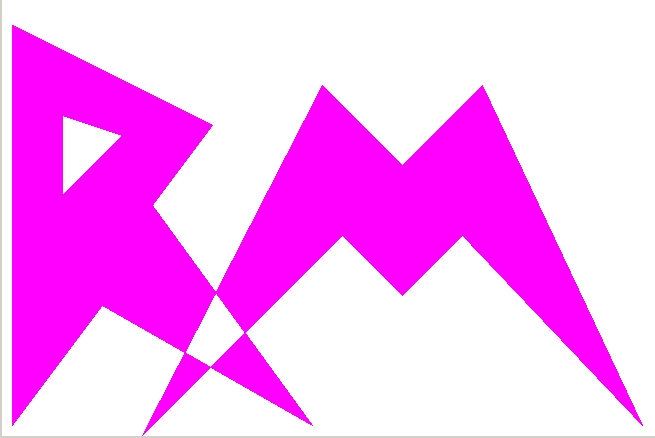The position of the graphics cursor is updated after each drawing statement within the boundary specification, just as it is after any drawing statement. However, after each boundary has been defined, the graphics cursor is restored to the position it had at the beginning of the shape statement. Therefore, each boundary that you describe in a single shape statement begins at the same position, unless you reposition the graphics cursor by specifying a move or a move arc statement before the boundary's other drawing statements.
Restoring the graphics cursor in this way between a shape statement's boundary specifications frees you from making errors in specifying the positions of multiple boundaries in a shape.
The shape statement shown below consists of several boundary specifications.
solid magenta shape
boundary # Exterior of letter R
draw 0 400
…
boundary
move to 60 240 # Hole of letter R
…
boundary
move to 140 0 # Letter M
draw 180 350
…
end shape
After each boundary is drawn, the graphics cursor is restored to its starting position. The first drawing statement in the second and third boundary specifications begins with a move statement to reposition the graphics cursor for the new boundary.
